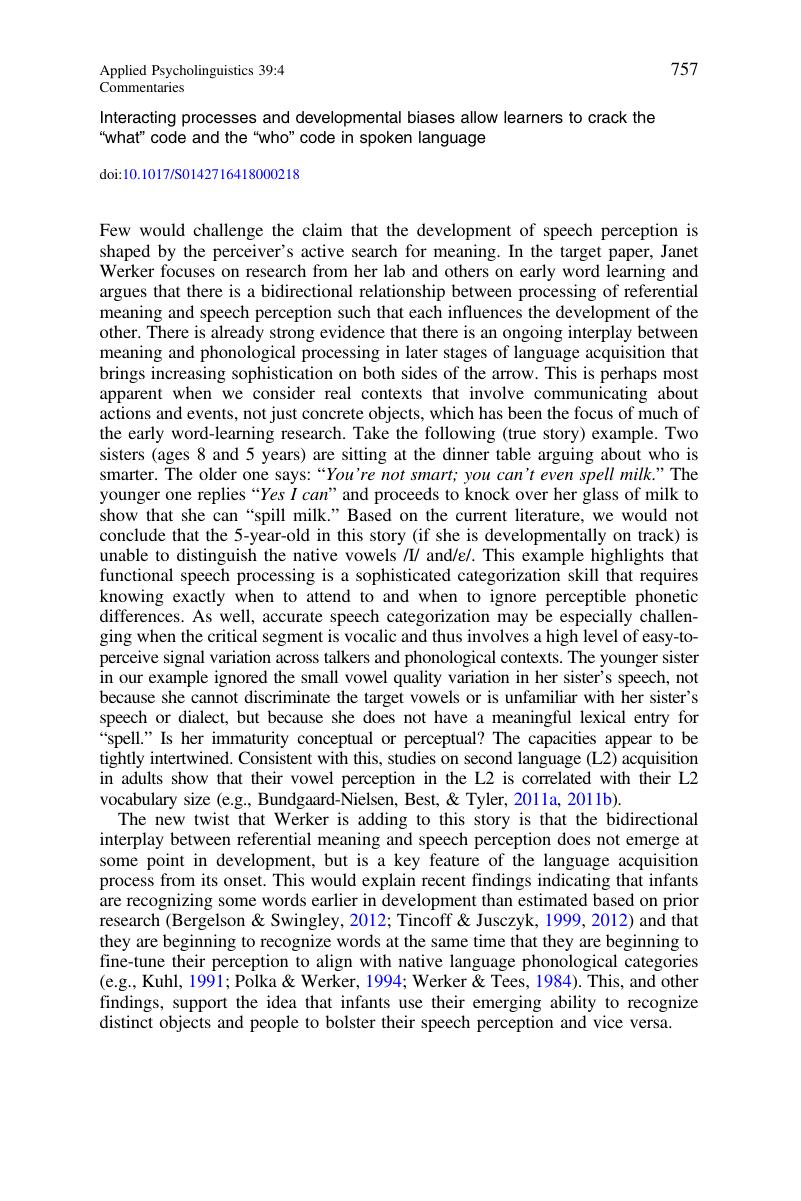Crossref Citations
This article has been cited by the following publications. This list is generated based on data provided by Crossref.
Nazzi, Thierry
and
Cutler, Anne
2019.
How Consonants and Vowels Shape Spoken-Language Recognition.
Annual Review of Linguistics,
Vol. 5,
Issue. 1,
p.
25.
Grodniewicz, J. P.
2021.
The process of linguistic understanding.
Synthese,
Vol. 198,
Issue. 12,
p.
11463.
Orena, Adriel John
and
Werker, Janet F.
2021.
Infants’ Mapping of New Faces to New Voices.
Child Development,
Vol. 92,
Issue. 5,
Grodniewicz, J. P.
2023.
The representational structure of linguistic understanding.
Inquiry,
p.
1.





